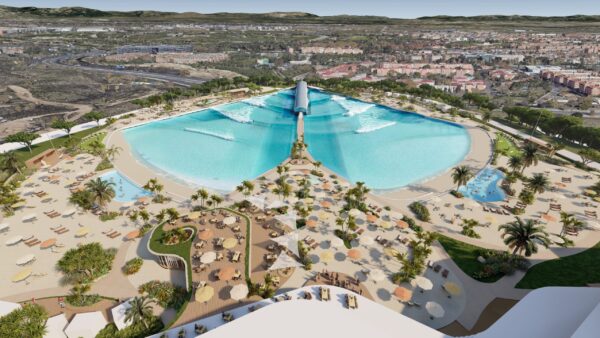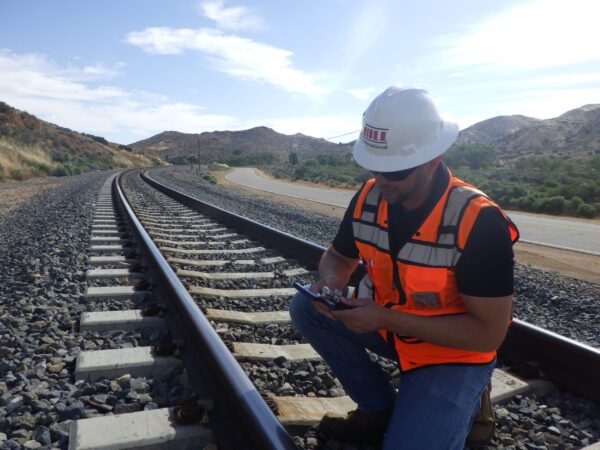
March 12, 2025 | Articles
Get Stoked: Hill International Makes Big Waves in Spain’s Surfing Scene

Early in 2025, European Commission President Ursula von der Leyen announced InvestAI, an initiative to fund the development of artificial intelligence (AI) throughout the European Union (EU). In addition to investing in startups and training programs, Invest AI creates a €20 billion fund for the development of “AI gigafactories”: massive data centers that will provide the infrastructure needed to continue scaling up Europe’s AI industry.

“InvestAI is just one high-profile example of the many public and private responses to European demand for increased in-house data infrastructure and data capacity,” says Hill International Country Manager, Italy Andrea Tota. “In line with the EU’s Digital Decade program, we can expect continued investment and continued growth in the market as technology companies and developers, their project teams, and public officials collaborate to realize the next generation of European data centers.”
Finding the Funding, Finding the Land
Even with strong public support, delivering a data center is a complex endeavor. In Europe, two critical risks facing owners involve their projects’ financial feasibility and local land-use requirements, explains Andrea. “The financial and land-use risks are very much related,” he adds. “In Italy, for example, much of the territory is already urbanized, so today urban planning does not include the consumption of new land. Furthermore, being a country of great landscape, historical and environmental value, a large part of the territory is subject to constraints. For this reason, data center developers are called to invest in the reconversion of buildings and abandoned areas, and this involves a variety of challenges”. .”
According to Andrea, common challenges associated with brownfield data center developments include:
Such risks can threaten projects by increasing upfront costs, limiting operational capacity, and/or reducing potential returns on investment. To achieve project success and profitability on their brownfield data center investments, developers require effective project management.
Realizing Returns
Leveraging real estate experience and a deep familiarity with the risks involved in data center and brownfield construction, Andrea and other experts within Hill’s Italian Data Center Department conduct preliminary analyses and due diligence to assess sites, existing assets, and project plans. With such assessments, project managers can flag operational inefficiencies early and implement project management processes and tools to mitigate or eliminate risks.
“We understand developer and end user requirements” says Andrea. “For example, we know how to develop a good test-fit for a standard hyperscale or edge facility to evaluate land opportunities, how to assess environmental or permitting risk during acquisition, and how to verify power availability for an area. After evaluating those and other constraints with owners, we use our construction experience to identify suitable solutions for those areas with the greatest potential for improvement according to market-specific best practices. Considering owners’ financial goals, we then develop construction strategies for delivering upgrades cost effectively, propose alternative procurement strategies for long-lead items, and support tenant partnering initiatives to get data centers up and running at their peak as soon as possible.”
Project managers can also manage permitting services related to compliance with the obligations required by the local regulatory environment. “Regulations surrounding data centers are changing rapidly,” says Andrea. “Last year, for instance, the Italian Ministry of Environment and Energy Security issued sustainability guidelines for data centers. We help our data center clients in the country develop their environmental impact assessments (EIA) in line with those guidelines and collaborate to identify the best strategies for permitting and design.”
By staying on top of regulatory issues on behalf of owners, project managers help capture all relevant regulations in project specifications, promoting the delivery of compliant facilities, preventing delays in EIA approvals or the need for rework, and saving money and time. Additionally, understanding the regulatory environment allows owners to take advantage of tax incentives for green building practices or renewable energy installations, contributing further towards a project’s financial feasibility.
A Network of Urban Hubs
Many developers are exploring ways to enhance brownfield data center projects by integrating their facilities with surrounding urban districts. By connecting data centers to neighboring heating systems, developers can supply heat to homes, offices, and other nearby buildings. In this way, data centers go from energy sinks to sustainability hubs, reducing the need for fossil fuel-based heating and cutting carbon dioxide emissions.
“This is an exciting prospect for developers,” says Andrea. “With the proper regulatory framework, it would help resolve some of the challenges related to identifying locations for projects and make brownfield projects more attractive to investors. It would also, of course, contribute to making data centers more sustainable in line with relevant local regulations and the European Green Deal.”

Plus, by locating data centers of different sizes in urban districts, developers can establish networks of edge data centers. “While traditional data centers remain indispensable, edge data centers, with their decentralized infrastructure, bring services closer to end users,” explains Deerns Italia Business Developer, Data Centers Mauro Rigo. “Specifically, edge data infrastructure processes data much closer to the source. This enables faster, safer, and more efficient data management, reduces latency and increases user satisfaction, and brings advantages for IoT [internet of things] technology, as well as certain AI applications.”
Despite the potential benefits, there are challenges associated with delivering data centers in urban settings, especially in residential neighborhoods. During design, developers must achieve architectural harmony with surrounding structures while meeting all operational requirements, and construction requires strict logistics and safety plans. “Social integration is probably even more important than the technical challenges,” adds Deerns Italia Unit Director, Data Centers Danilo Andreotti. “Involving local communities helps raise awareness about the benefits of data centers, such as job creation and technological advancement. Transparency about operations and any environmental impacts is also key to building trust.”

Project managers can facilitate community involvement and transparency through strategic messaging. Andrea mentions the development and implementation of formal communications plans and the management of all community outreach initiatives as services that can facilitate stakeholder engagement and alleviate community concerns about energy reliability, noise or vibrations from data center operations, and/or architectural integration of data center facilities into neighborhoods.
“Implementing data center infrastructure as part of mixed-use developments would also support urban integration,” Andrea goes on. “A win-win approach would be to pair data centers with facilities for which it can be hard to find space in urban settings, such as skate parks, padel courts, art installations, or even farms.”
Delivering the Infrastructure of the Digital Decade
While all construction involves risk, the financial/land-use risks and the changing regulatory environment associated with data center construction in Europe make these projects uniquely challenging. However, as technologies such as AI and cloud computing become further entrenched in European economic, cultural, and social life, demand for secure, reliable in-house data center capacity will only continue to grow.
With EU support for data infrastructure, as well as the technical and management expertise of a dedicated project manager, technology companies and developers can continue to innovate in the sector, deliver financially feasible and sustainable urban data center hubs, and establish the infrastructure for Europe’s digital decade.
This article is based in part on “Edge Data Centers: A New Paradigm for Sustainability and Urban Integration,” a panel discussion organized by Deerns and held on April 2 at Data Center Nation Milan 2025. Andrea Tota spoke on the panel alongside Deerns Data Center Sector Director Colin Wyatt, Mediterra Chief Executive Officer Emmanuel Becker, Bryden Wood Architecture Director Mauro Burgio, Colliers Head of Data Centers Faustino Musicco, and Data Center Nation Global Strategic Advisor Simon Allen.
For more information about Hill’s work on data centers around the world, please visit: https://www.hillintl.com/projects/?_sft_sector=technology.
Share

March 12, 2025 | Articles
Get Stoked: Hill International Makes Big Waves in Spain’s Surfing Scene

March 9, 2025 | Articles
Project Manager TJ Pinales: Helping Along the Road in San Antonio

March 4, 2025 | Articles
Balancing the Equation: An Interview with Project Manager Tracy Wiyrick

March 1, 2025 | Articles
A Lifelong Project: Calypso Kyriakopoulou’s Multifaceted Career in Construction

February 10, 2025 | Articles
Dual Delivery: A Viable Strategy for Complex Transit Projects

January 23, 2025 | Articles
Plotting a Roadmap to Success on the Torres de Colón Renovation

December 12, 2024 | Articles
Progressive Design-Build for Rail and Transit Projects: Room to Run

December 9, 2024 | Articles
Unlocking Growth: Maximizing the Benefits of the SBA’s Mentor-Protégé Program